Views: 42
Kerin O’Keefe 的新作 Barolo and Barbaresco: The King and Queen of Italian Wine 是繼她的 Brunello 專著後的另一本意酒聖經。
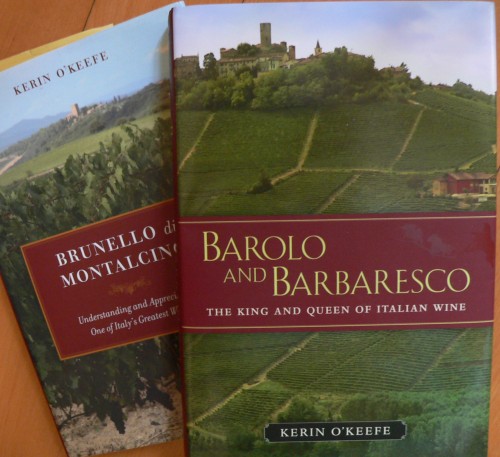 等了這本書很久了,前幾天收到書後,我便狼吞虎嚥的翻了好幾次,看得我心花怒放。最值得高興的是她忠於自己的傳統口味,而且毫不隱瞞的宣告於天下﹕
等了這本書很久了,前幾天收到書後,我便狼吞虎嚥的翻了好幾次,看得我心花怒放。最值得高興的是她忠於自己的傳統口味,而且毫不隱瞞的宣告於天下﹕
I readily admit that most of my favorite Barolos and Barbarescos — the ones I find most fascinating thanks to their inimitable character and Nebbiolo purity — are generally those made with traditional methods. By that I mean those wines that have undergone slow fermentation (usually without using selected yeasts) followed by lengthy postfermentation maceration with the skins — often made with the customary submerged cap method, whereby wooden boards hold down the cap. This method slowly and gently extracts aromas, noble tannins, and complexity from Nebbiolo.
但她原則上並不反對法國小木桶﹕
I can honestly say that I don’t have anything against these small French barrels — as long as I don’t smell or taste the dominant wood sensations they easily impart. Some producers from the Langhe have become masters with barriques, including Elio Altare, Andrea Sottimano and Luciano Sandrone.
所以這三位都有出現在她的書裏,但 Roberto Voerzio 缺席,而 Domenico Clerico 與 Rocche dei Manzoni 則在「值得留意」之列。
我一直都認為用小木桶是藝術,只有天份高的人才能用得恰到好處,而 Elio Altare 是最好的一個。我很高興看到 Kerin 對 Altare 很公允的評價﹕
While Altare’s Barolos are not typical, they can be gorgeous, and while sleek and polished, they still manage to maintain their Nebbioloness. They are not the fruity oak bombs some die-hard Barolo fans have made them out to be; nor are they quintessential expressions of Barolo and Nebbiolo. They are, like their creator, highly original, fascinating, and deserving of their cult status.
讀來像樂評或藝評多於酒評,是嗎?
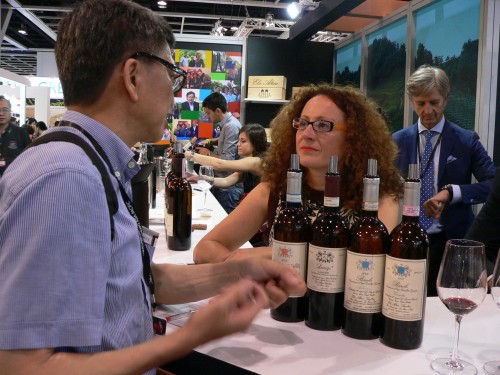 今年在 Vinexpo 遇到 Silvia Altare,我告訴她 Altare 最懂得用小木桶
今年在 Vinexpo 遇到 Silvia Altare,我告訴她 Altare 最懂得用小木桶
我覺得 Altare 的趣味是 Burgundy 的,無怪乎 Kerin 發現酒莊裏遍布 Burgundy Grand Cru 的空瓶子。
但更有趣的是 Altare 也非常欣賞 Bartolo Mascarello﹕
Altare also admits that one of the greatest wines he has ever had, tasted blind during a dinner a few years ago, was a 1971 Bartolo Mascarello.
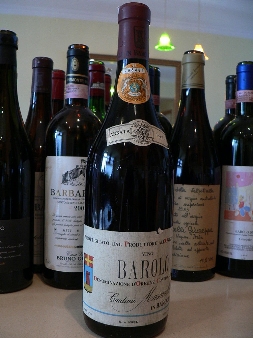
我曾描述為「究竟涅槃」的 1971 Bartolo
這裏我忍不住要借題發揮一下。很多人認為新舊派的界線今天已變得模糊了,但我認為兩種不同的意趣還是很明顯的。一邊是喜歡乾淨的香氣,和果味為主導的口感,另一邊則試圖以全景方式來呈現風土的特性,注重結構和不同元素的關係多於單純的果味。Giuseppe Rinaldi 對兩派的分別有非常精闢的見解(取自2001 年一篇訪問記)﹕
He thinks the main difference between the two camps is in ”the way of interpreting Barolo and its territory” … He feels that the modernists have adopted a misleading concept of cru, and that paradoxically, while pretending to focus on their individual character, they are making all crus taste more and more similar. ”We should cultivate the differences, because differences have always existed between these hills”. There is a difference between wines from La Morra and Castiglione Falletto, he adds; these are ”sfumature” (small differences) between aromatic profiles and types of structure. These should be respected for their ”internal value”, because originality, individuality is the strength of all things. ”I believe in the power of anarchy”, he ends his discourse.
(來源﹕ http://www.wineloverspage.com/user_submitted/wine_notes/tn_188233.html)
簡單而言,傳統派善於表達「異」,新派卻往往把這些差異磨平了。Giuseppe Rinaldi 不是從技術層面來談,他抓住了最核心的問題﹕葡萄酒為何物?。
今天才開始喝 Barolo 的人不會理解當年兩派的爭論有多激烈。最好說明問題是推波助瀾的酒評人。試看美國 Wine Spectator 雜誌在 1994 年 10 月 31 日號對兩款經典年份 1989 Barolo 的評價便可知一二。
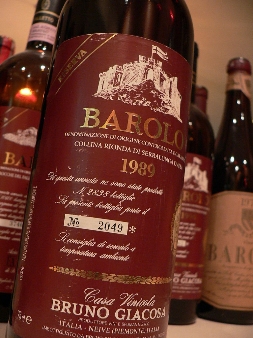
鄉巴佬還是一代天驕?
Bruno Giacosa 的 1989 Barolo Collina Rionda 今天被公認為「完美的 Barolo」(Antonio Galloni 在 2010 年評了 100 分),當年 WS 竟然打了 78 分,評語令人啼笑皆非﹕
Has a certain rustic charm, but the coarse texture and drying tannins don’t do justice to the spicy black cherry flavors. Drink fairly soon with hearty food.
Bartolo Mascarello 的 1989 Barolo 更糟糕,這等噪音只值 76 分,﹕
Tough and bitterly tannic, like biting into a handful of walnut scraps, with wet earth and menthol overtones to the modest plum and prune flavors struggling to be heard over the noise.
連意大利的 Gambero Rosso 也趕上潮流,很多最不像 Nebbiolo 的 Barolo 和 Barbaresco 拿了最高的「三酒杯」獎。
俱往矣,數風流人物,還看 Kerin O’Keefe。
以下是我的讀書筆記,供大家參考。這篇講天、地、人,下篇再分區分村介紹。
天時
(見﹕Heating Up, p. 25+, Barbaresco, p.213+ and Excellent Vintages, p.313+)
引 Federico Spanna 教授的意見﹕
The trend toward warmer, drier growing seasons actually began toward the second half of the 1980s.
資深的酒評人認為 1982 或 1985 是最早的暖化年份,之後只有幾年是例外﹕1989, 1996 和 2002。Giuseppe Rinaldi 稱 1996 以後的年份是 African vintages 非洲年份。
因為天氣變暖,原來在十月中、下旬的採收期今天一般提早到十月初了。
原來的所謂 sori 田(朝正南的山頂位置)今天不一定那麼佔優,但 Barbaresco 可能是得益者,因為相鄰 Tanaro River 的調節作用﹕
Barbaresco’s finesee is a direct consequence of microclimate and soil. Unlike Barolo, which is blocked from the Tanaro River by the ridge of La Morra, the Barbaresco production zone is wide open to the influences of the Tanaro and its valley. While it creates fog in the winter, in the summer the river influence gives the Barbaresco growing zone hotter morning temperatures when compared to Barolo. The river also generates evening breezes that keep the vines fresh and healthy.
一個最好的例子是﹕在乾燥年份如 2007 與 2009,Barbaresco 都比 Barolo 要新鮮。
Kerin O’Keefe 的五星年份包括﹕
- 1947
- 1958 (definitely on the decline but still impressive)
- 1961 (the best are still maintaining)
- 1964 (long-lived wines with initially tough tannins that took years to come around)
- 1970 An excellent vintage
- 1971 (A superb vintage that produced age-worthy wines with complexity and finesee. Drink)
- 1978 (Monumental wines of extraordinary structure and longevity. Still have years to go. Drink or hold)
- 1982 (Gorgeous, richly textured, and structured wines. Still growing strong. Drink or hold)
- 1989 (Stunning wines destined for long cellaring. Still developing and had years left. Drink or hold)
- 1996 (A classic vintage that yielded austere, structured wines with tough tannins and nervous acidity that recall old-school vintages like 1978. Will come around and develop gripping complexity and mesmerizing depth, but this year is one for the ages. Hold.)
- 1999 (An excellent vintage that is starting to bloom now but can be aged for another decade or more. Drink or hold.)
- 2001 (Outstanding vintage that produced classic wines that needed time. They are drinking beautifully now, but should continue to develop and maintain for another decade at least. Drink or hold.)
- 2004 (A fantastic vintage defined by impeccable balance and elegance. Drink or hold.)
- 2006 (A classic vintage with bright red fruit, great depth, and gripping, chewy tannins along with nervous acidity. Hold.)
- 2010 (Classic vintage, with crunchy red fruit, racy acidity, and bracing but fine tannins. Surprisingly accessible upon release thanks to the noble quality of the tannins and ripe fruit, but will also deliver tremendous aging potential develop beautifully for decades. Hold for complexity.)
地利
(見﹕Geographic Mentions, p.322+)
Kerin O’Keefe 舉出她認為最值得留意的葡萄園,這裏我把她的看法與其他三位很有份量的酒評人的意見並列於下表。Kerin 的 Grand Cru 田有 20 塊,特別值得留意的是她對 Verduno 有很高的評價,另外她對 Barbaresco 情有獨鍾,她的選擇甚有參考價值(Pajore 與 Rio Sordo 的確是好田)。
Barolo
Barbaresco
人和
(見﹕Truce in Barolo and Barbaresco, p.49+)
Kerin 列舉了她個人最喜歡的 10 家酒莊,最冷門的是 Barbaresco。Kerin 說 “Barbaresco is dominated by small growers-turned-winemakers whose tiny productions may be hard to find abroad.” 聽後令我很雀躍,我幻想有一天我可能找到 Barbaresco 地區的 Il Paradiso di Manfredi 和 Baricci。The hunt begins!
Barolo
- Giacomo Conterno
- Bartolo Mascarello
- Giacomo Fenocchio
- Burlotto
- Cavallotto
Barbaresco
- Roagna
- Cascina delle Rose
- Rizzi
- Olek Bondonio
- Adriano Marco e Vittorio
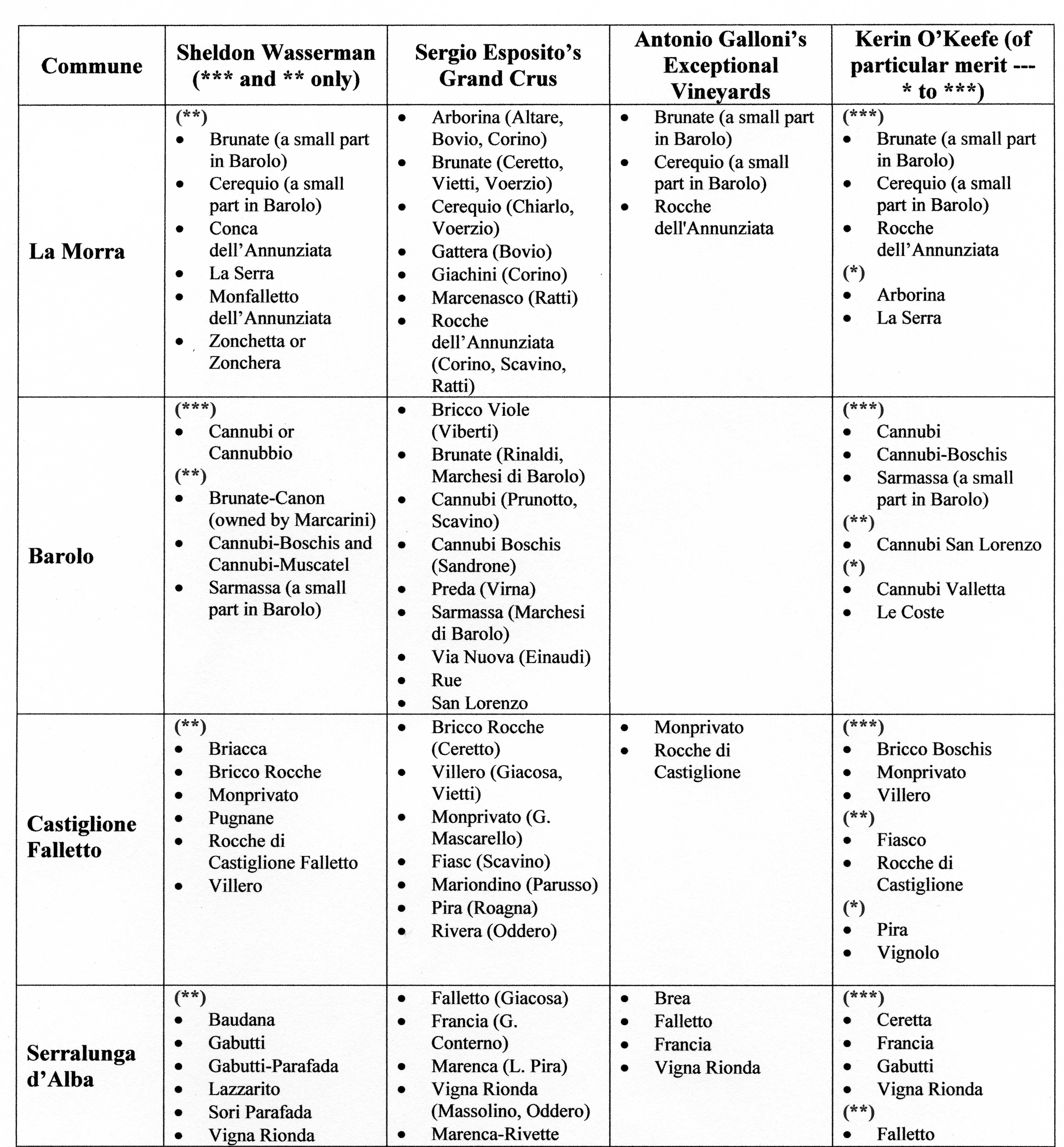
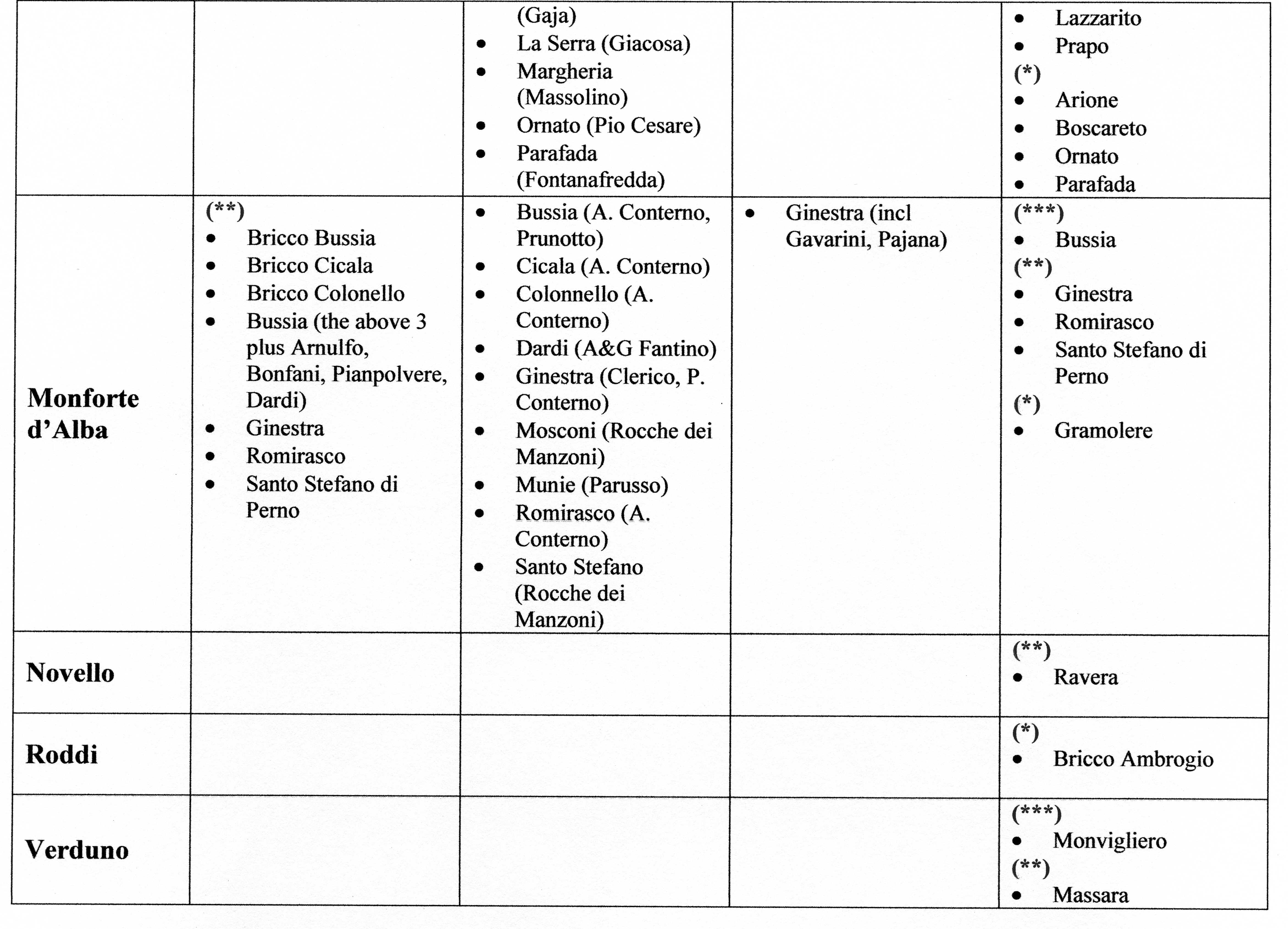
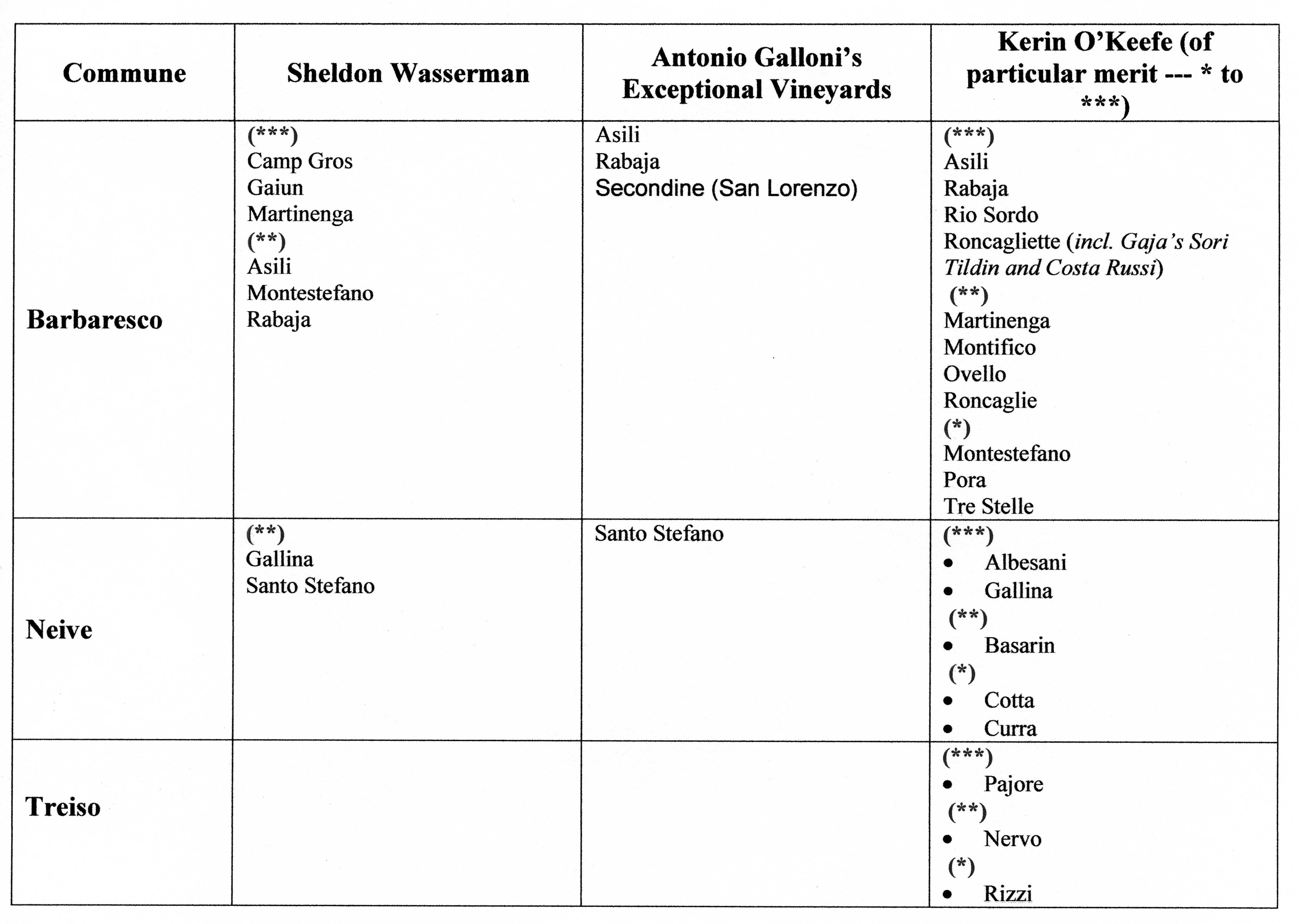
抱青兄的笔记是一大功德! 有一点想确认,KO说的Bussia范围是否只是Bussia Soprano/ Bussia Sottana?
2010 颁布的新分区办法,把Bussia 山的一大片都统统叫Bussia,包括Bussia Soprano/ Bussia Sottana 与其它很多田(如 Aldo Conterno 的几块),但我看见Aldo Conterno的2010 Romirasco 现在叫 2010 Bussia Romirasco,所以原来的名字似乎也可以复活,只要戴顶帽子。